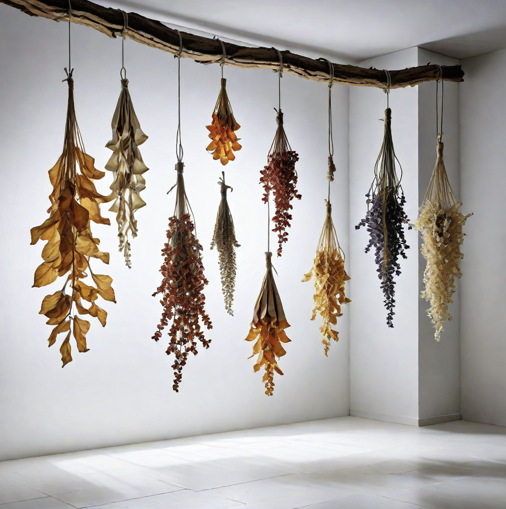In the realm of interior design and home decor, dried and preserved botanicals have emerged as timeless elements that add a touch of natural elegance to any space. These exquisite botanicals, whether flowers, foliage, or other organic materials, undergo specialized techniques to preserve their beauty and extend their lifespan. Let's delve into some of the fascinating techniques behind dried and preserved botanicals.
-
Drying: Drying is one of the oldest methods used to preserve botanicals. In this process, fresh flowers or foliage are carefully selected and arranged in a manner that allows for optimal air circulation. They are then hung upside down in a dry, dark environment to slowly remove moisture. This gradual drying process helps retain the shape, color, and texture of the botanicals, resulting in beautifully preserved specimens.
-
Freeze-Drying: Freeze-drying is a modern preservation technique that involves freezing the botanicals at extremely low temperatures and then subjecting them to a vacuum environment. This process removes moisture from the botanicals without causing significant damage to their cellular structure. The result is botanicals that retain their natural appearance, color, and fragrance, making them ideal for decorative purposes and arrangements.
-
Pressing: Pressing is a delicate technique commonly used to preserve flowers and foliage for various artistic endeavors. Botanicals are carefully arranged between layers of absorbent paper or fabric and placed under pressure for an extended period. As the moisture is gradually drawn out, the botanicals flatten and dry, preserving their intricate details and vibrant colors. Pressed botanicals can be used to create stunning artworks, greeting cards, and more.
-
Chemical Preservation: Chemical preservation involves treating fresh botanicals with specialized solutions that replace moisture and support structure. Glycerin and glycol are commonly used to replace the water content in the botanicals, resulting in flexible and long-lasting preserved specimens. This technique is particularly effective for preserving foliage and woody stems, providing a natural and lifelike appearance.
-
Silica Gel Drying: Silica gel drying is a versatile method that involves burying fresh botanicals in silica gel crystals, which act as desiccants to absorb moisture. The botanicals are carefully covered with silica gel and left to dry for a specified period. This technique allows for faster drying compared to traditional air-drying methods and helps preserve the shape and color of delicate flowers and petals.
In conclusion, the art of dried and preserved botanicals encompasses a range of techniques that celebrate the beauty of nature in its enduring form. Whether through time-honored methods like air-drying and pressing or innovative approaches like freeze-drying and chemical preservation, these techniques allow us to enjoy the splendor of botanicals year-round. Incorporating dried and preserved botanicals into our homes brings a sense of tranquility and natural beauty, infusing our living spaces with timeless charm and elegance.

